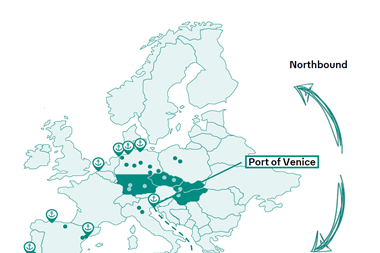 Once upon a time, interaction between carmakers and their customers happened in one place: the dealership. Dealer showrooms were where customers learned about products, chose a car and parted with their cash. Once a customer took possession of the vehicle, he was likely to return to the dealer for service and repair, at least during its warranty.
Once upon a time, interaction between carmakers and their customers happened in one place: the dealership. Dealer showrooms were where customers learned about products, chose a car and parted with their cash. Once a customer took possession of the vehicle, he was likely to return to the dealer for service and repair, at least during its warranty.
[in_this_story align="right" border="yes"]Today, that model is starting to fall apart. At the touch of a screen, customers can access dozens of sources of information about the pros and cons of their next vehicle, calling up reviews across publications and social media. If they want, they can often carry out much of the purchase process online too, using configuration tools to specify their vehicle, and websites to arrange financing.
According to Nick Gill, chairman at consultancy Capgemini’s global automotive sector, which has carried out surveys on consumers’ purchasing habits for two decades, new technology is bringing carmakers and dealers closer to end customers. “Believe it or not, that was a radical thought for the automotive industry [20 years ago], especially the OEMs. Retailers have been learning to get closer to their consumers for the past 15 years, but it is only really in the last two or three years that automotive companies have really started to do the same thing.”
Capgemini’s latest report on the topic shows a dramatic rise in the importance of third party information in customers’ purchasing decisions. The independent press emerges as the most popular information source, up from fourth place in the 2015 survey. Manufacturer websites take second spot, followed by traditional dealerships.
In emerging markets (the survey covered Brazil, India and China alongside the US and four major European markets) the difference was more pronounced, with less than a third of respondents saying they would use a dealership as a source of information about potential purchases.
[sta_anchor id="1"]By now, says Gill, many OEMs have built sophisticated online and social medial offerings. However the survey suggests they could do even more. Customers, especially in emerging markets, express enthusiasm for alternative forms of online information, from virtual reality presentations of vehicles and their features to live chat with a product expert.
Closing the saleWhile the Capgemini survey shows the majority of customers still expect to visit a dealership during the purchase of a new car, they do so less often. The survey shows that 73% of respondents expect to make a maximum of three visits to a dealer during the purchase process, up from 65% in 2015.
 "You could pay for access to a range of vehicles, or models around fractional ownership or rental, all the way to the Uber model of taxi-like service. People are also considering ‘Air BnB’-type models, where an individual owns the car, but rents it out to others." - Tim Lawrence, PA Consulting
"You could pay for access to a range of vehicles, or models around fractional ownership or rental, all the way to the Uber model of taxi-like service. People are also considering ‘Air BnB’-type models, where an individual owns the car, but rents it out to others." - Tim Lawrence, PA Consulting
Those visits provide the chance to test-drive or see a car, and to better understand its advanced features – requiring dealer staff to be highly informed about in-car technology. Instead of traditional sales staff, some brands, like BMW with its ‘Product Genius’ programme, are employing product experts who do not earn a separate commission on vehicle sales.
Others are experimenting with alternative sales models that take the car – and the product expert – to the customer. UK-based London Interactive Marketing, for example, has developed a direct-to-the-customer sales approach on behalf of a number of car brands. Under the scheme, a ‘brand champion’ takes a vehicle to the customer’s home for a test drive and to answer their questions, then works to configure a vehicle that suits the customer’s needs before passing the order on to a dealership for fulfilment.
Amazon, meanwhile, is rumoured to be building up a platform to sell new vehicles in Europe, launching first in the UK. The company already sells service parts, and has experimented with some online ordering in Italy, for example, although the transactions were finalised through dealers.
Tim Lawrence, global head of manufacturing at PA Consulting, suggests that, while direct-to-the-customer sales models are likely to grow in the coming years, vehicle sales are unlikely to become completely virtual. The most probable evolution, he suggests, is a mixed model, where customers can choose to place orders online or in a dealership, according to personal preference.
For vehicle logistics, such models may require only limited changes to current arrangements. “Today, dealers place an order into the factory, or look for a suitable model in the stock pipeline,” he says. “Online ordering can work the same way.”
While American dealerships tend to keep relatively large vehicle stocks on their premises, in Europe and other markets OEMs hold vehicle inventories in national or regional hubs, where they also carry out pre-delivery inspection (PDI) and preparation. Such networks would already able to handle direct deliveries, if required, Lawrence adds. “In terms of the main physical logistics locations, there won’t be much change as you move to an online model. You may have customer pickup points, rather than the dealer itself. But most likely there will be delivery to the home.”
Offering a flexible supply chainBut that doesn’t mean things will be plain sailing for OEMs, dealers or logistics providers. For example, with self-service ordering, dealers may lose the chance to persuade customers to add options to their cars at the time of purchase, an important boost for manufacturer (and dealer) margins. This is an area where OEMs have more work to do, says Lawrence.
[mpu_ad]“That upselling will have to become part of the sophisticated configuration and buying process,” he says. “They’ll make offers to you as you go through the configuration process.”
At Capgemini, Nick Gill notes that the period – up to several months depending on market and brands – between customer order and delivery of a new vehicle is an under-exploited opportunity for both customer and OEM. “Buying a car is big thing you don’t do that often. It is reasonably stressful and can be quite difficult to make the right decision,” he says. “But when you eventually do make a decision, you want approbation. You are still in a bubble, very open to further confirmation that you’ve made the right choice. So, if somebody comes to you and says, ‘not only have you made the right decision, but I’ll offer you fantastic services on top at a very small incremental price’, you are more likely to buy that.”
Capgemini’s survey also shows that customers want to be able to change their minds about specifications after the order is placed, and want clear, timely information on the progress of their car. Delivering that flexibility will be a powerful way to boost customer satisfaction, says Gill, even though it [sta_anchor id="2"]will be challenging to manufacturing and logistics processes.
“Order management and configuration management is already an incredibly complex process in automotive. Build-to-order is tough and just-in-time sequencing isn’t easy,” he says. “But more and more, the winning companies are going to be able to offer those things.”
From product to servicePerhaps more fundamentally, the whole concept of vehicle ownership is now in flux. “Already, today, people don’t really buy cars,” says Tim Lawrence. “More and more they are leasing a car in different forms.” He notes that 70-80% of sales today in the UK are based on personal contract plan arrangements. Once customers are comfortable with the concept of paying a fee every month to use a vehicle, they may consider different ways that might be done.
“You could pay for access to a range of vehicles, or models around fractional ownership or rental, all the way to the Uber model of taxi-like service,” says Lawrence. “People are also considering ‘Air BnB’-type models, where an individual owns the car, but rents it out to others. “
This new world of ‘mobility services’ is evolving rapidly, with new entrants piling into the market, existing rental providers expanding their offerings and OEMs establishing, or buying into, versions of their own. If these new models were once seen by carmakers as a threat, they now look more like an opportunity. According to Capgemini’s survey, 56% of consumers see mobility services as complementary to car ownership rather than an alternative to it. Two-thirds say that the brand of vehicle on offer is an important consideration in car-sharing programmes, with that number rising to more than 80% in India and Brazil.

New use cases are popping up everywhere, says Nick Gill. For example, one carmaker has found that an effective niche for its shared-use offerings is in multiple occupancy buildings, such as retirement [sta_anchor id="3"]communities, where the use of the vehicle can be part of the offer to tenants. Such applications see a high vehicle utilisation rate, which is good for the provider, and the building owners can apply higher service charges.
Supporting the serviceSuch shared-use models do require mechanisms for storing, supporting and distributing vehicles throughout their operating life, and those activities are increasingly going to become the responsibility of OEMs and service providers rather than individual owners.
With around 1m members worldwide, Zipcar is already one of the largest of the new generation of car-sharing services. Founded in the US in 2000, the company was bought by the car-hire firm Avis Budget in 2013. Today, the business operates around 12,000 vehicles in eight countries. While Zipcar makes use of the purchasing power and manufacturer relationships of its parent group to buy vehicles, its operations are largely independent of Avis Budget.
In the UK, says senior marketing manager Garry Thornton, vehicles are typically delivered into PDI centres near ports, where dedicated Zipcar teams prepare the cars and install its proprietary access technology. Then they are delivered to city hubs, from where they’re distributed across the network.
In the UK, Zipcar works closely with local councils to secure on-street parking spaces for its vehicles. Its aim, says Thornton, is “to ensure our network is where our members live and work”. That is more challenging in some cities than in others, he notes. In New York, for example, vehicles tend to be grouped together in larger pods, which simplifies inspection and maintenance. In London, where cars are more widely distributed, dedicated mobile [sta_anchor id="4"]service teams are employed.
Zipcar vehicles are provided by multiple OEMs – it has more than 50 makes and models in its portfolio. The typical working life of a vehicle is 12 months, after which they are returned to the OEM, or sold on the second-hand market.
A new dealThe provision of mobility services could, says Gill, be a valuable opportunity for dealers, allowing them to build close, ongoing relationships with users. “Does this mean the death of the dealer? Absolutely not,” he says. “As a consumer, you need proximity, you need servicing, so you know whatever you are picking up is in good working order, and you need somebody you can trust. Those things mean the dealership of the future is going to change to be much more of a place where you go in the mid-life years, rather than just buying car.”
 Today's model, in which dealers place an order into the factory or just look for a suitable model in the stock pipeline, could be mirrored in online ordering
Today's model, in which dealers place an order into the factory or just look for a suitable model in the stock pipeline, could be mirrored in online orderingThe challenge for dealers will be in providing a broader range of services in a way that offers a seamless customer experience. “If dealerships are offering multiple services, they may need to package them separately internally, but externally you have to be customer-focused. You have to understand who John Smith is, and what they are doing. The real ‘secret sauce’ will be that you understand John Smith’s mobility requirements better than anybody else, better even than John Smith.”
Technology will help dealers build such relationships, says Gill. Connected-car technologies, like condition-based maintenance systems, can improve reliability and make servicing more efficient and convenient. Such systems can also inform service providers about consumer habits, allowing them to tailor their offerings, although privacy and security issues still need to be overcome.
Even more profound technological changes are on their way. Electric vehicles will transform service requirements, eliminating many current preventative maintenance tasks altogether, but adding new complexities, like the mid-life replacement of heavy, expensive batteries. Autonomous cars will offer new ways to put shared-use vehicles where they are needed most.
“The confluence of these big trends, autonomous, connected, electric and shared – the so-called ‘CASE’ or ‘ACES’ technologies – is really going to change the transportation model,” concludes Gill. “Cars are going to be used a lot more, hours off the road will be critical, mileage will be higher, but the ability to predict when vehicles are going to break down will be easier. Nobody really knows how it is all going to work out, but anybody who thinks the world is going to look the same in 10 or 15 years is not getting the full picture.”

































